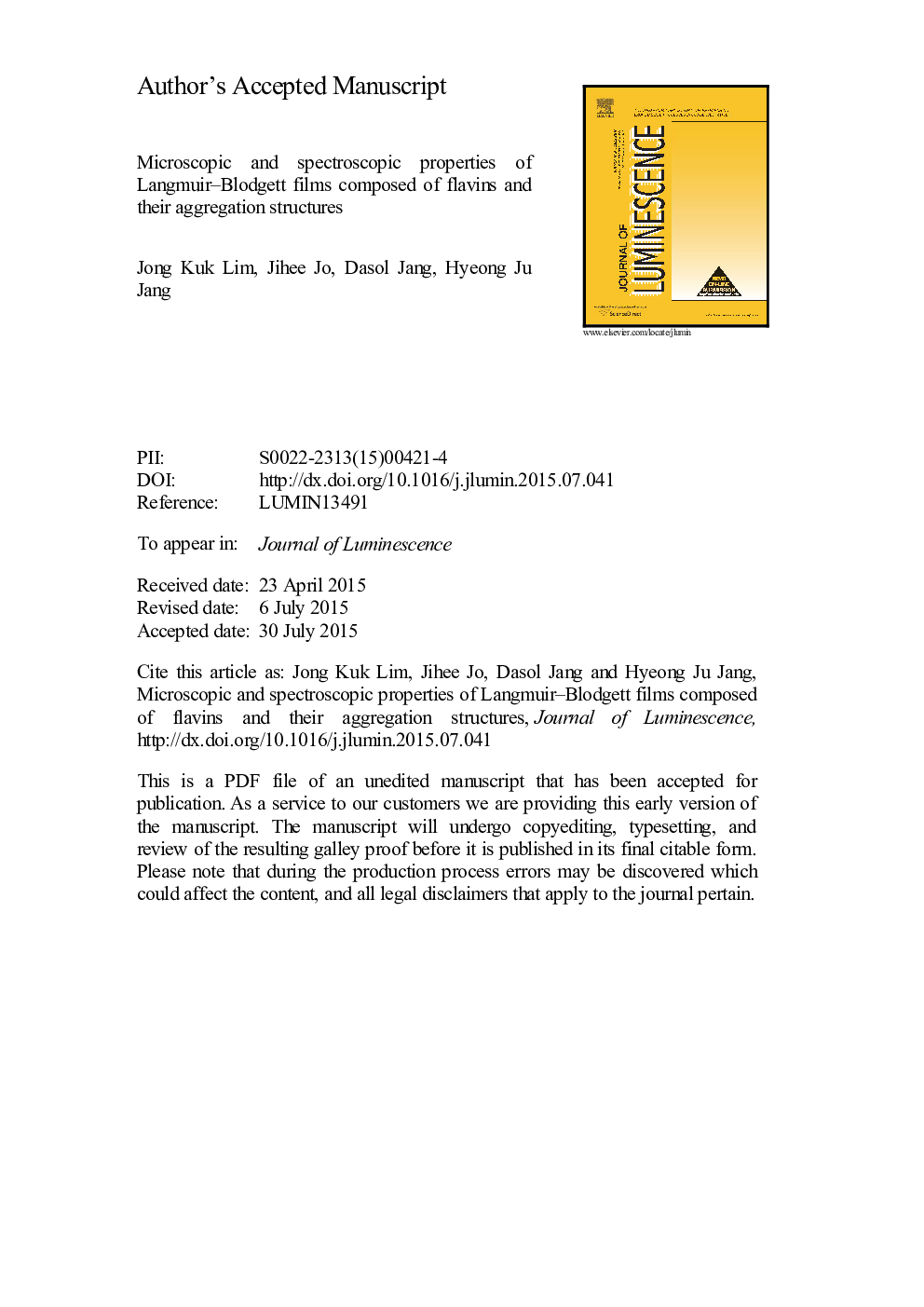| Article ID | Journal | Published Year | Pages | File Type |
|---|---|---|---|---|
| 5399282 | Journal of Luminescence | 2015 | 29 Pages |
Abstract
Isoalloxazine derivatives (flavins) are commonly found in natural systems that are involved in an electron transfer process, such as photosynthetic or metabolic systems, and are also frequently used as electron donors in organic-based electronic devices. As an example, molecular photodiodes composed of 7,8-dimethyl-10-dodecyl isoalloxazine (DDI) have been fabricated by the Langmuir-Blodgett (LB) technique, and such devices showed characteristic properties of photodiodes. The efficiency of molecular photodiodes is dependent on the assembled structure of the LB films, which is related to the morphology of the LB films. For that reason, Lim has investigated the morphology of LB films, and found that rod-shaped domains are formed when a DDI monolayer is transferred to a solid substrate above a specific surface pressure (Thin Solid Films, 531 (2013) 499). In that paper, rod-shaped domains were revealed to be collapsed triple layers, i.e., double layers collapsed on the monolayer; however, the detailed aggregation structure of the constituent molecules (DDI) has not been studied. Herein, we investigate the microscopic and spectroscopic properties of LB films composed of DDI. We apply the extended dipole model to explain spectral changes in the absorption spectra and propose an aggregation structure for DDI in the LB films.
Related Topics
Physical Sciences and Engineering
Chemistry
Physical and Theoretical Chemistry
Authors
Jong Kuk Lim, Jihee Jo, Dasol Jang, Hyeong Ju Jang,
